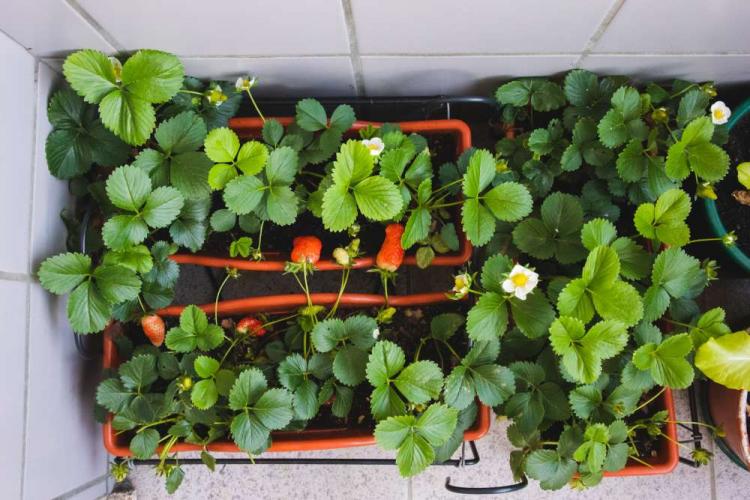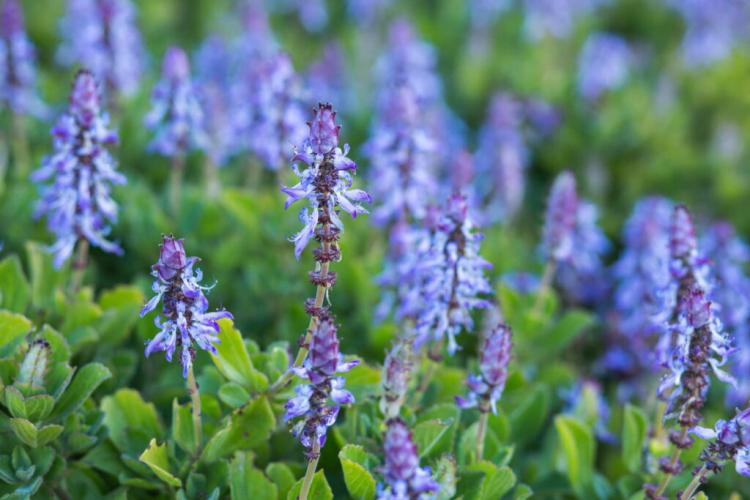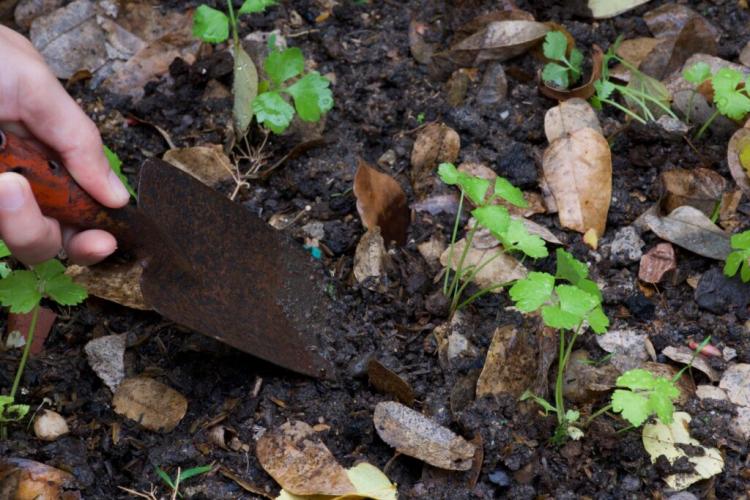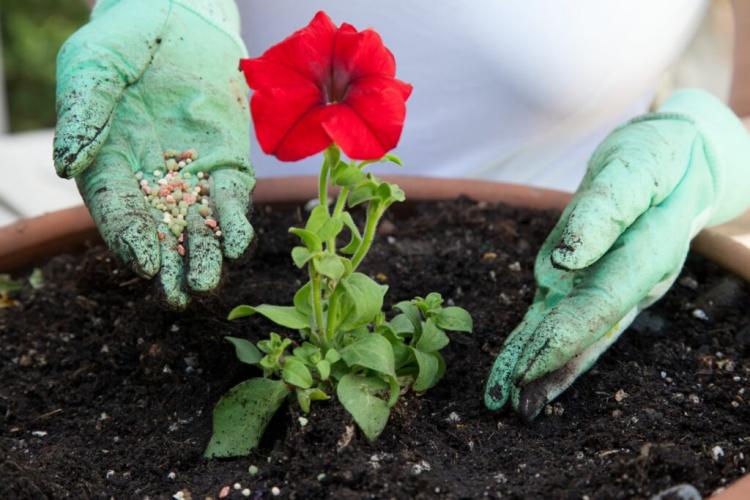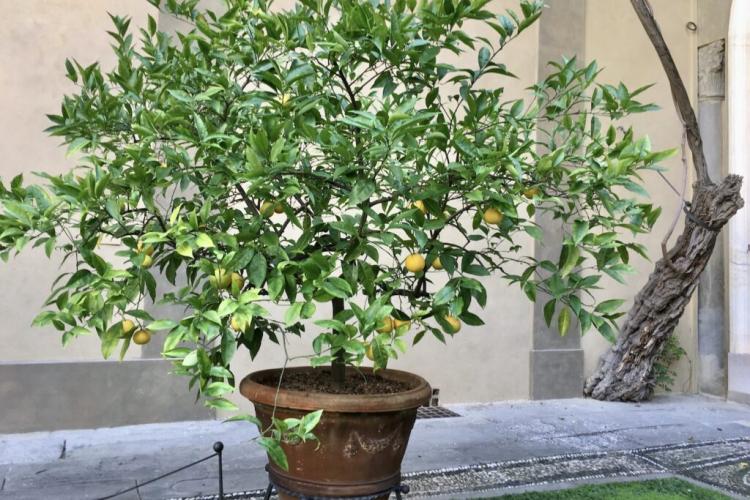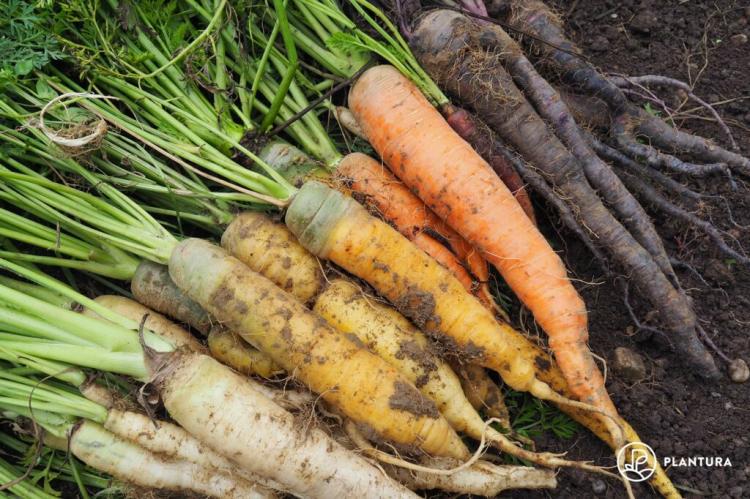Caring for chives: watering, fertilizing & cutting
With the right background knowledge, chives can usually be cared for without any problems. We will show you the right tricks for healthy and vital plants.

With the right care, the chives grow into a vigorous, lush green plant [Photo: Svetlana Monyakova / Shutterstock.com]
Chives ( Allium schoenoprasum ) are one of the most popular herbs and give every bread that certain something. The cultivation of the leek family (Allioideae) is quite uncomplicated and can take place both in the bed and in the pot. Once the chives have been planted, it is time to take care of them. We will show you what to consider when caring for the herb and how you can avoid problems.
Caring for chives: water properly
Table of Contents
Chives generally have a high water requirement, which can usually be covered by rain outdoors. Both in pots and outdoors, the soil should be kept slightly moist at all times. Watering is more often necessary in summer than during the rest of the year, as this is the time of the year when the plants grow strongest and the higher temperatures mean that more water evaporates from the plants and soil. The best time to determine the right time is through a finger test. You should adjust the watering amount to the size of the plant, as too much water in the pot can lead to oversaturation of the root zone and thus to root rot.
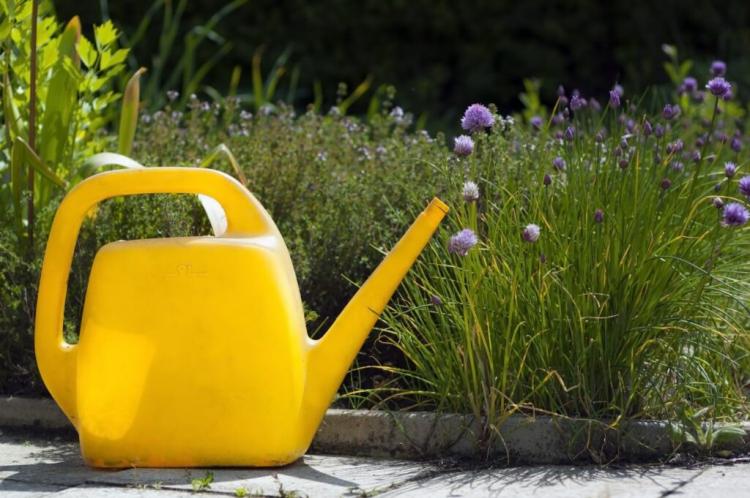
Because of its high water requirements, it is particularly important for chives to be watered regularly [Photo: Bleshka / Shutterstock.com]
Fertilize chives: do chives need fertilizer?
Chives are one of the most nutrient-consuming plants, which is why regular fertilization is important, especially during the vegetation phase. In addition to compost, coffee grounds are also suitable for fertilization, as they provide the chives with important nutrients and at the same time keep the soil slightly acidic. If you also want to promote a healthy humus content in the soil, you can use an organic fertilizer. A fertilizer in granulate form is particularly suitable for this, as a long-term effect is ensured and the herbs are supplied with nutrients in the best possible way. Fertilization is therefore only necessary at the beginning of vegetation in March and once during growth in July at the latest. Our Plantura organic universal fertilizer, for example, provides the plant with all the important nutrients – it is also produced completely organically and without the use of animal components. The fertilizer can simply be sprinkled on the earth and easily incorporated, which also stimulates the soil life. Then the fertilized areas should be well watered to make the nutrients available to the plants.
Cutting chives: Here's how to do it
A care cut is not necessary with chives as long as the plant is healthy. If it is still to be cut, there are a few things to watch out for in order not to harm the plant. If you want to remove individual stalks, you can cut them off just above the ground with scissors or a sharp knife.
When should you cut chives?
Chives can be cut throughout the growing season. However, you shouldn't remove too many stalks at once, otherwise the chives can shrink. With high consumption or in the case of excessive stress on the plants, it is therefore worth growing several chive plants. In autumn the leaves begin to dry up and fall off the plant. This is part of the natural overwintering of the chives, because they sprout again from the onions the following year. If you still want to use the leaves, you can use them and cut the chives back close to the ground in autumn – this does not harm the plant in the late vegetation stage and prepares it for winter.
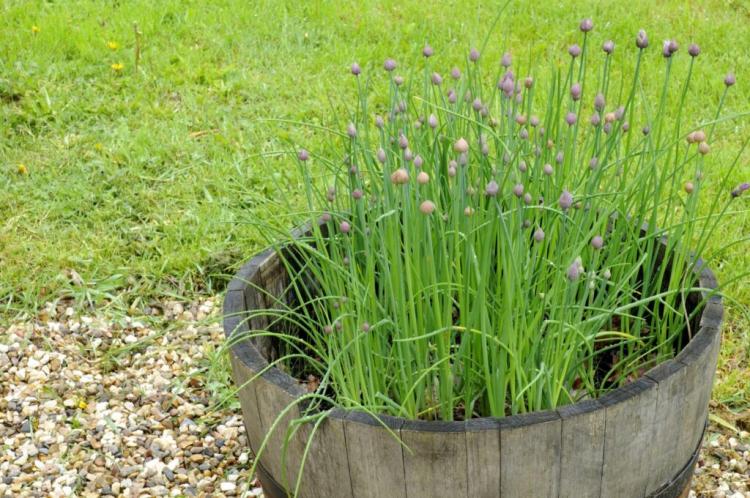
Chives grow in pots as well as outdoors or in raised beds [Photo: janet carr / Shutterstock.com]
Tip : You can read about how to harvest and use chives correctly in our profile on chives.
Cut chives blossoms?
In addition to the stalks, the flowers of the chives are edible and are considered a delicacy in some countries. They can be eaten on bread or used as an edible decoration for salads or soups. To use the flowers, you should cut them as high as possible on the inflorescence stem with a sharp knife or scissors. The inflorescence stem, on the other hand, is firmer than the leaves and tasteless.
Maintaining chives in the pot: what you should keep in mind
In addition to being grown outdoors, chives – like other herbs – are popular potted plants and can be found on many terraces, balconies or on the windowsill. In our special article we introduce you to the best types of chives for every taste.
Pour the chives in the pot, fertilize and cut
The culture in the pot ensures special conditions, especially when watering. Unlike outdoors, the moisture in the pot cannot be retained, which makes regular watering indispensable. In principle, the soil should not dry out completely, otherwise the plant threatens to wither. Waterlogging can also damage the plant. Good drainage is therefore important so that excess water can drain away and the soil always contains enough air. This prevents water build-up and thus lowers the risk of root rot. In addition to regular watering, it is worth fertilizing in the summer for potted cultivation – as well as outdoors. In small pots, fertilizing with compost or coffee grounds is usually a little more difficult because of the limited space. The use of a high-quality liquid fertilizer such as our Plantura organic indoor & green plant fertilizer, on the other hand, is much easier.
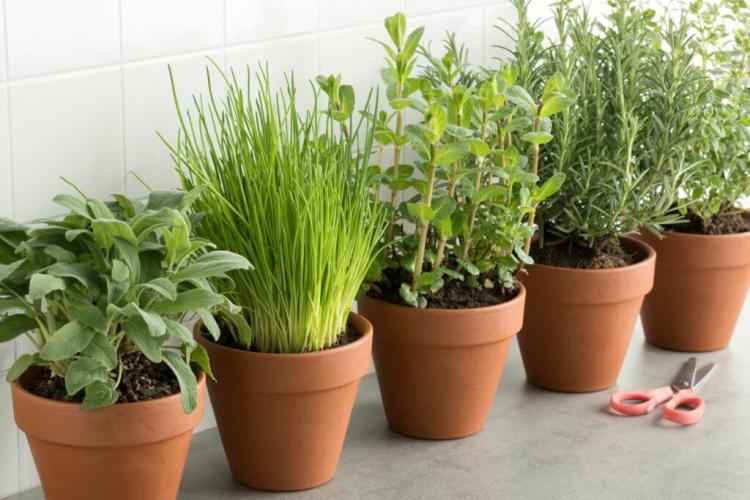
As a culinary herb, chives can also be grown in pots without any problems [Photo: Picture Partners / Shutterstock.com]
Repot the chives
So that chives can grow well, the plant should be repotted every one to two years. The earth collapses over time and important micronutrients can no longer be replenished. The plant can be removed from the old pot and excess soil easily knocked off. The pot is then filled with earth and pressed lightly. Subsequent watering is important for the roots to grow.
Repotting is also a good opportunity to divide the chives. So the old pot can be used again and you get a second plant. Here, too, adequate ventilation and water drainage are important for healthy plant growth. A high-quality potting soil is suitable as a substrate, as it supplies all of the nutrients that are important for the plant. A good water storage capacity is also crucial in order not to have to water constantly when cultivating with limited root space. Our Plantura organic universal soil, for example, offers the best conditions for healthy and strong plants thanks to its biologically sustainable composition.
The right care for chives at a glance:
- Regular watering after the finger test, whereby drying out of the substrate and waterlogging should be avoided.
- A care cut is not necessary with chives.
- The flowers are considered a delicacy in some countries and can be eaten without hesitation.
- You should fertilize regularly during the vegetation, as chives are one of the most nutritious herbs.
- Chives in the pot should be repotted every 1 to 2 years in order to supply the plant with important micronutrients again and to improve the structure of the soil.
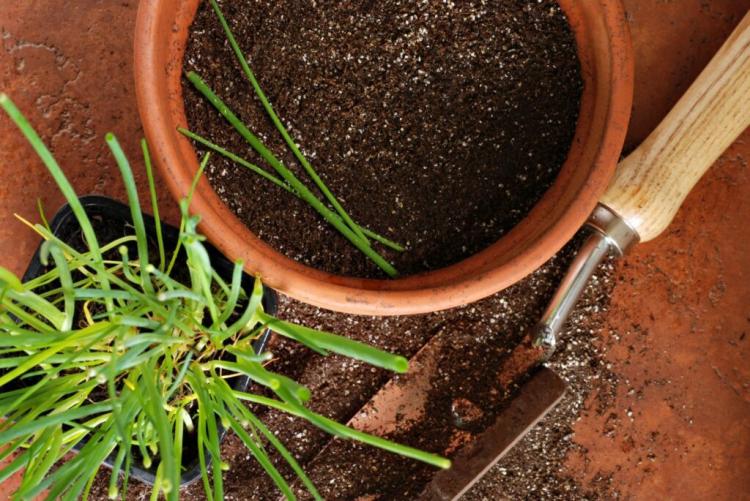
Chives should be repotted every 1 to 2 years to give the plant more space [Photo: Marie C Fields / Shutterstock.com]
Chives don't grow and turn yellow: you can do that
Although chives are a very robust plant, in rare cases individual stalks or entire clusters can turn yellow. In addition to the rich green color, the chives also lose their aroma and should therefore no longer be used. The most common cause of yellow leaves on chives is dryness, as lack of water causes them to wither. Individual yellow stalks are a good indicator of insufficient water – it should then be watered immediately. If large parts of the plant are already yellow or dried out, the chives can be saved by completely cutting back all the leaves up to about two centimeters above the bulb. The chives then begin to sprout again, so that the first stalks can be harvested after about four weeks. You should take care of a steady, adequate water supply. In order to increase the tolerance to dry periods, the chives need healthy roots. The growth of the root – as well as the entire plant – can be stimulated and promoted by fertilization.
More rarely, too much water can cause the leaves to turn yellow. The substrate should be checked for too much moisture and should not be watered for a long time if it is too damp.
Tip : Would you like to sow herbs yourself and experience the process through to the complete plant? You will find detailed instructions as well as seeds and the necessary accessories in our Plantura herb growing set.
In addition to chives, parsley is one of the most popular garden herbs. Read everything about the correct location and planting of parsley in our article.

